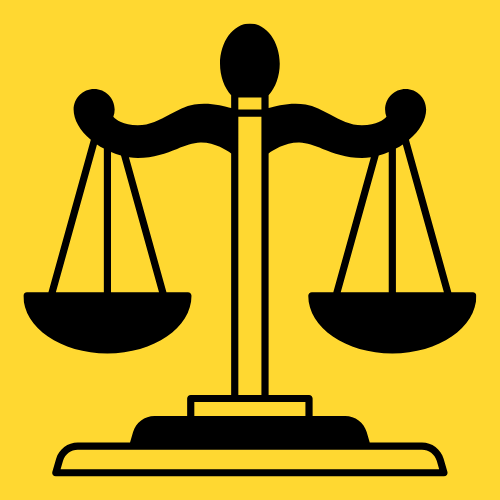RAJABU KHALIFA KATUMBO AND THREE OTHERS v REPUBLIC 1994 TLR 129 (CA)
Court Court of Appeal of Tanzania - Dar es Salaam
Judge Mnzavas JJA, Mfalila JJA and Lubuva JJA B
CRIMINAL APPEAL NO. 94 OF 1993
19 April, 1994
(From the judgment of the High Court of Tanzania at Morogoro, Bahati, J) C
Flynote
Evidence - Identification of accused persons - Murder committed at night during a burglary - Whether identification of the accused as the murderers could not have been mistaken.
-Headnote
The four appellants were tried and convicted of murder and sentenced to death. They appealed against conviction and sentence, arguing that they were victims of mistaken identity. The offence was committed at night in the course of a burglary.
Held:
(i) Although the offence was committed at night, there were two lamps in the E corridor inside the house which facilitated the identification of the offenders; (ii) The accused were known to the witnesses well before the day of the incident; the witnesses, therefore, were extremely unlikely to mistake them; (iii) On the totality of the evidence, the Trial Judge was entitled to come to the F conclusion that the appellants were properly identified as among the robbers who terrorised the house on the material night.
Case Information
Appeal dismissed.
No cases referred to.
Lubulira, for the appellants.
Miss Korosso for the respondents.
[zJDz]Judgment
Mnzavas, JA, delivered the following considered judgment of the Court: H The four appellants, Rajabu Halifa Katumbo, Salehe Shabani Msebwege, Kibwana Shabani Msebwage and Kigona Iddi Kigoma were tried for murder. They were found guilty and duly convicted. Bahati, J accordingly sentenced them to death. Two grounds of appeal filed on behalf of the appellants were argued for them by Mr Lubulira, learned defence counsel. Miss Korosso, learned state attorney resisted the appeal. The following facts which led to the arrest and arraignment of the appellants were not in dispute: B On 6 April 1990 at Malui village, Kilosa district the house of one Salehe Vindiri was burgled into by bandits who in the course of their nefarious activities shot and killed Salehe Vindiri. They also shot dead one Mkunda Mkunda, a watchman. C One Mkingila, (PW1), who rented part of the house of the deceased, Salehe Mkingila, in which he was running a shop was also shot and injured; bullets brased his cheek and head. The killings were reported to the police and wheels of investigation led to arrest and arraignment of the appellants and seven other accused who were acquitted.
In the High Court the Republic alleged and convinced the trial judge that the appellants were the assailants and that they killed the deceased persons with malice aforethought. D The trial court relied mainly on the evidence of Salum Mkingila, (PW1) and Siwatu Hassani (PW2) who testified that they saw and recognised the appellants on the fateful night as they were marauding the shop armed with a gun. E In their defences the first appellant advanced defence of alibi saying that he was sleeping in his house the whole night the killings took place. Likewise the second appellant told the court that he could not have committed the offence as he was on the material day in his house from 6 pm till morning with his wife Suzana. Suzana supported her husband's defence of alibi. F The third appellant also advanced the defence of alibi and said that on the material date - 5 April 1990 he was at his house from 7 pm till next morning. G Kigoma Iddi Kigoma, fourth appellant, said he was nowhere near the scene of crime. According to his defence he was at home in Kisokwe village on 5 April 1990. He remained in his homestead from 8 pm till next morning. H The learned judge considered the defences of the appellants and came to the conclusion that the defence of alibi was not available to any of them. He believed the prosecution witnesses, (PW1 and PW2), that they properly identified the appellants as among the bandits they saw on the material night. Mr Lubulira, learned defence counsel, vigorously assailed the decision of the High I Court arguing that the killings were committed at night and that it was possible that the two witnesses could have been mistaken in their identification of the appellants; as conditions favouring A identification were difficult.
It was argued that as there must have been pandemonium while the bandits were burgling the house and shooting indiscriminately it was unlikely that PW1 and PW2 could have been so courageous as to be able to peep from their rooms and recognise the bandits. In rebuttal Miss Korosso submitted that although the offence was committed at night there were two lamps, a hurricane lamp and a wick-lamp burning in the corridor of the house through which the bandits passed towards the shop. It was also argued that both the witnesses knew the appellants before the incident; and that PW1 mentioned the names of the appellants to the police which facilitated in their arrest. C As for the evidence of PW2 who had told the police that he knew two of the bandits by their faces although she did not know their names, Miss Korosso submitted that the witness identified the first and fourth appellants as among the bandits on the material night in an identification parade without any hesitation. D The learned state attorney was of the view that on the evidence the two witnesses could not have mistaken the identity of the appellants and asked the court to dismiss the appeal.
After a thorough scrutiny of the evidence we agree with Miss Korosso, learned state attorney, that the totality of the evidence entitled the learned judge to come to the conclusion that the appellants were properly identified by PW1 and PW2 as among the robbers who terrorised the house on the material night. There was F undisputed evidence that all the appellants were well known to PW1 before the killing. There was also undisputed evidence that although the offence was committed at night there were two lamps burning in the corridor inside the house which facilitated their being identified. And what is more PW1 immediately reported to the police what had happened and mentioned the appellants as among the bandits. The report facilitated in the arrest of the appellants. G Again PW2 also told the police that he recognized two of the robbers on the material night as she had seen them in the village on many occasions before the incident; although she said she did not know their names.
That she recognised H two of the bandits on the material night was fortified by her identification of the first and fourth appellants in a police identification parade without any hesitation. It is also relevant to mention that both witnesses told the court that the first appellant, Rajabu Khalfani Katumbo, was armed with a gun; and when PW1 was cross-examined as to how he recognized the voice of the bandit who told the others `shoot him he is escaping' he replied: `I have known Kibwana (third appellant) for a long time. I knew Kibwana's voice. We used to play sports together'. Apparently there was no suggestion leave alone evidence that PW1 and PW2 had reason to tell lies against the appellants so as to cause them their undoing. It is our view that for evidence to be so consistent the only common denominator, save perjury, must be truth. We are satisfied in our own minds that the possibility C of mistaken identification of the appellants as among the bandits who burgled the house on the material night and killed the two decease was properly excluded by the learned judge. In the event the appeal is dismissed in its entirety and it is so ordered.
1994 TLR p132
E


%20(10).png)





0 Comments
PLACE YOUR COMMENT HERE
WARNING: DO NOT USE ABUSIVE LANGUAGE BECAUSE IT IS AGAINST THE LAW.
THE COMMENTS OF OUR READERS IS NOT OUR RESPONSIBILITY.